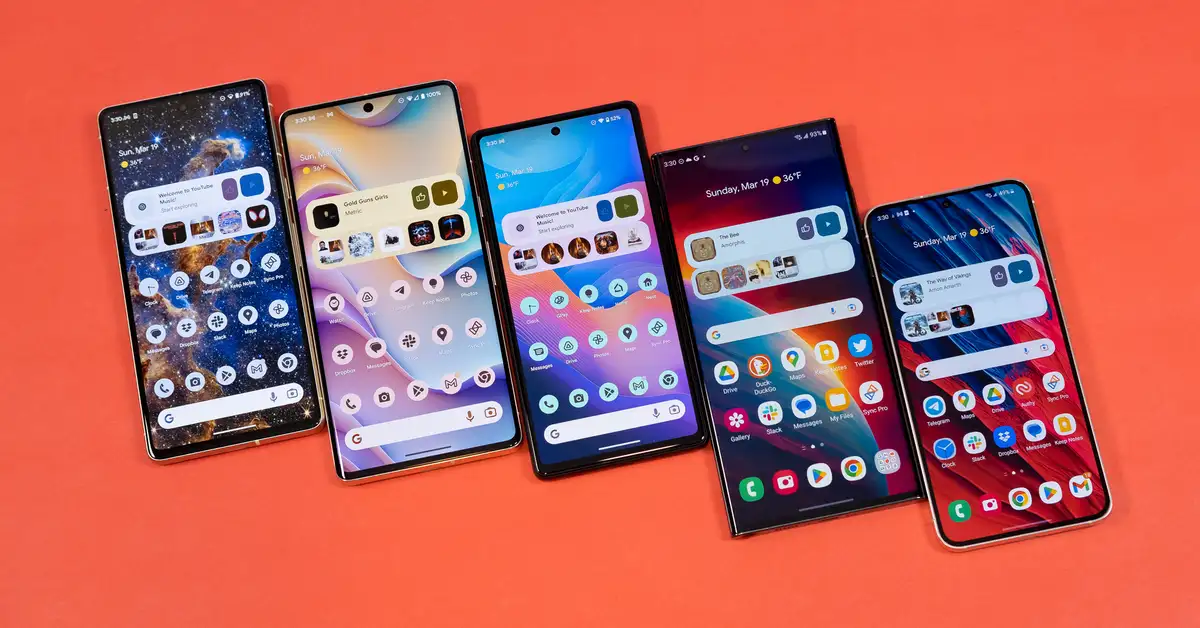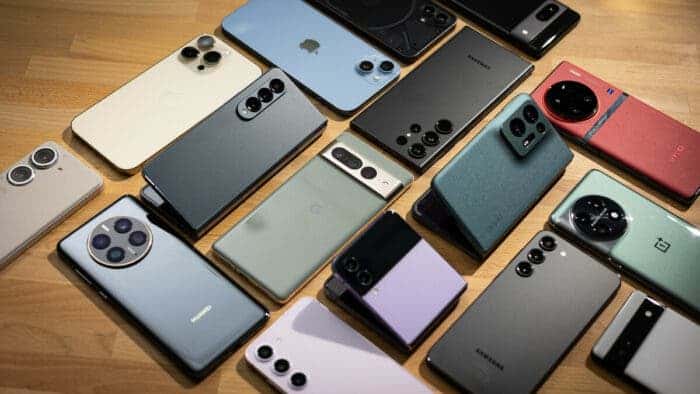In today’s fast-paced world, governed by the relentless churn of technological advancements, a new movement is gaining traction: the desire for smartphones that endure. Consumers are increasingly prioritizing durability and longevity over fleeting trends and yearly upgrades. This shift in consumer behavior is fueling the growth of a significant market segment – long-lasting smartphones.
The Enduring Appeal: Exploring the Growing Market for Long-Lasting Smartphones

This article delves into the factors driving this emerging trend, the benefits associated with longer-lasting smartphones, and the challenges faced by manufacturers in catering to this evolving market. Additionally, it explores the future prospects of this segment and its potential impact on the sustainability of the smartphone industry.
Why the Shift Towards Long-Lasting Smartphones?
Several factors are contributing to the growing demand for long-lasting smartphones:
- Rising Environmental Concerns: Consumers are becoming increasingly aware of the environmental impact of the e-waste generated by frequent phone upgrades. The manufacturing, use, and disposal of smartphones involve the extraction of rare earth materials, consumption of energy, and generation of toxic waste. Opting for phones with longer lifespans minimizes this environmental footprint.
- Economic Considerations: The cost of flagship smartphones continues to rise, making frequent upgrades a financial burden for many users. Choosing a phone that lasts longer represents a smarter investment, offering greater value for money in the long run.
- Shifting Priorities: As consumers mature and their needs evolve, priorities shift. The focus on cutting-edge features often seen in younger demographics gradually gives way to a greater appreciation for reliability, durability, and longevity in their devices.
- Software Support Concerns: The traditional two-year software support cycle offered by many manufacturers is no longer considered sufficient for today’s users. Security updates and new features are crucial for maintaining a positive user experience, and consumers are seeking phones with longer periods of software support.
The Benefits of Long-Lasting Smartphones
The growing market for long-lasting smartphones offers numerous benefits for both consumers and the environment:
- Reduced E-Waste: By extending the lifespan of smartphones, the overall volume of electronic waste generated is significantly reduced. This translates to a smaller environmental footprint, minimizing the need for resource extraction and mitigating the harmful effects of improper disposal.
- Cost Savings: Consumers opting for long-lasting devices benefit from significant cost savings compared to frequent upgrades. This allows them to allocate their financial resources elsewhere, contributing to a more sustainable personal economy.
- Improved User Experience: Phones with longer lifespans can offer a more consistent and reliable user experience. Users can familiarize themselves with the device and avoid the learning curve associated with frequent upgrades.
- Enhanced Brand Loyalty: Manufacturers catering to the long-lasting phone market can build stronger brand loyalty among consumers who appreciate their commitment to sustainability and user experience.
Challenges in Building Long-Lasting Smartphones
While the market for long-lasting smartphones presents exciting opportunities, it also comes with its own set of challenges for manufacturers:
- Balancing Durability with Innovation: Striking a balance between creating robust, long-lasting devices and incorporating the latest cutting-edge features can be difficult. Advanced features often require more delicate components that may compromise durability.
- Software Support: Extending software support cycles requires significant investment from manufacturers in terms of development and maintenance resources. This can be challenging, especially for smaller companies competing with larger players.
- Battery Degradation: Battery performance naturally deteriorates over time. Replacing batteries within long-lasting devices needs to be addressed, either by offering readily available and affordable replacement options or incorporating innovative battery technologies that slow down degradation.
The Road Ahead: The Future of Long-Lasting Smartphones
Also, the market for long-lasting smartphones is expected to witness significant growth in the coming years, driven by increasing environmental awareness, cost considerations, and shifting consumer preferences. Here are some potential future trends:
- Focus on Modular Design: Modular designs allow users to replace individual components like batteries or cameras, extending the lifespan of the device without needing a complete upgrade.
- Sustainable Materials: Manufacturers are likely to explore the use of more sustainable materials in phone construction, minimizing the environmental impact of these devices throughout their life cycle.
- Software Support Innovation: New approaches to software support could emerge, including extended support cycles, community-driven updates, or subscription-based models offering longer support durations.
A Positive Shift Towards Sustainability
So, the growing market for long-lasting smartphones represents a positive shift towards a more sustainable future for the technology industry. By prioritizing durability, manufacturers can cater to a growing segment of conscientious consumers, reduce their environmental impact, and enhance brand loyalty. This shift not only benefits individual users but also contributes to a more responsible and sustainable future for the planet.

Beyond Durability: Exploring the Nuances of Long-Lasting Smartphones
While the core premise of long-lasting smartphones revolves around durability, the market encompasses a wider range of factors that contribute to their appeal and effectiveness. Let’s delve deeper into some additional aspects shaping this evolving landscape:
Gizchina News of the week
Beyond Physical Durability: While physical robustness is crucial, it’s equally important to consider software longevity. This includes extended security updates, ongoing bug fixes, and even the potential for major operating system upgrades. Without consistent software support, even the most durable phone becomes vulnerable to security threats and loses functionality over time.
The Right to Repair: The growing “Right to Repair” movement advocates for users’ ability to access information, tools, and spare parts to repair their own electronic devices, including smartphones. This empowers users to extend the life of their phones, fostering a sense of ownership and reducing reliance on manufacturers for repairs.
The Role of Refurbished Devices: The refurbished market is experiencing significant growth alongside the demand for long-lasting smartphones. Reputable companies refurbish and resell used devices, offering consumers a more affordable and environmentally friendly alternative to purchasing new phones. This not only extends the lifespan of existing devices but also creates new avenues for access to technology.
The Premiumization of Durability: Traditionally, durable phones often lacked the sleek aesthetics and cutting-edge features associated with premium smartphones. However, a growing trend sees manufacturers incorporating premium materials and design elements into long-lasting devices, creating products that cater to a wider range of user preferences.
The Rise of “Buyback” Programs: Manufacturers are increasingly offering “buyback” programs, where they repurchase used devices at a predetermined price. These programs provide consumers with an incentive to upgrade to newer models while ensuring responsible recycling and reuse of valuable materials within the industry.
The Evolving Definition of “Long-lasting”: The definition of “long-lasting” is constantly evolving. While some users might prioritize a phone lasting for five years, others might seek a ten-year lifespan or the ability to easily upgrade key components. Manufacturers need to adapt to this spectrum of expectations and offer various options catering to diverse needs.
The Impact on Consumer Behavior: The long-lasting phone market is not just about the technology itself, but also about a shift in consumer behavior. Choosing a long-lasting device reflects a conscious decision to prioritize sustainability, value for money, and responsible consumption. This trend has the potential to influence other aspects of consumer electronics and beyond.
A Collaborative Effort: Creating a truly sustainable long-lasting phone market requires a collaborative effort. Manufacturers need to prioritize durable construction, extended software support, and responsible recycling practices. Governments can play a role by enacting supportive regulations, such as Right to Repair laws and extended producer responsibility for electronic waste. Finally, consumers need to actively choose long-lasting phones, participate in responsible e-waste disposal, and advocate for sustainable practices within the industry.
In conclusion, the growing market for long-lasting smartphones represents more than just a shift towards durable devices. It signifies a movement towards a more sustainable, responsible, and value-driven approach to technology consumption. By addressing the various challenges and embracing the opportunities presented by this market, we can pave the way for a future where technology and environmental responsibility go hand in hand.
Extending Your Smartphone’s Lifespan: Tips and Tricks
While manufacturers play a crucial role in creating long-lasting smartphones, several steps individuals can take to further extend the life of their existing devices:
Optimize Battery Usage:
- Adjust Screen Brightness: Lowering screen brightness significantly improves battery life. Utilize automatic brightness adjustments whenever possible.
- Disable Background App Refresh: Background app refresh allows apps to constantly fetch updates, draining battery. Disable it for non-essential apps.
- Turn Off Location Services When Not Needed: Location services are a significant battery drain. Turn them off when you don’t need GPS functionality.
- Utilize Power Saving Mode: Most smartphones offer power-saving modes that limit background processes and features, extending battery life.
- Avoid Extreme Temperatures: Heat and cold can damage batteries. Avoid leaving your phone in direct sunlight or extreme cold environments.
- Charge Wisely: Maintain a battery charge between 20% and 80% whenever possible. Avoid letting your phone completely drain and fully charge it too often.
- Invest in a Quality Charger: Use the original charger or a certified one from a reputable brand to avoid damaging the battery.
Maintain Your Device:
- Use a Protective Case: A case protects your phone from drops and scratches, preventing physical damage.
- Keep Up with Software Updates: Software updates often contain bug fixes and security patches, ensuring your phone’s optimal performance and security.
- Clean Your Phone Regularly: Dust and dirt can accumulate in ports and affect phone functionality. Use a soft, dry cloth to clean your phone regularly.
- Organize Your Storage: Regularly delete unused apps, photos, and videos to free up storage space and improve performance.
Consider Repair and Refurbishment:
- Explore Repair Options: If your phone experiences minor issues, consider getting it repaired instead of replacing it.
- Look into Refurbished Phones: When upgrading, consider purchasing a certified refurbished phone instead of a brand new one. This allows you to access technology while minimizing environmental impact.
Responsible Disposal:
- Trade-in Programs: Utilize manufacturer or carrier trade-in programs to responsibly recycle your old phone.
- E-waste Recycling Centers: If trade-in options are unavailable, look for certified e-waste recycling centers in your area to ensure safe and responsible disposal of your old phone.
By implementing these tips and tricks, individuals can significantly extend the lifespan of their smartphones: Contributing to a more sustainable future for the technology industry. Remember, small changes in individual behavior can collectively create a significant positive impact.





